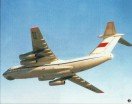|
PARABOLIC FLIGHT
as a means of producing weightlessness
Weightlessness, zero-gravity, micro-gravity
As gravity is a physical force that can't be
switched off by an opposite field, the only way to simulate weightlessness is
to submit to it, i.e. free fall.
All the principles for the simulation of
weightlessness used by researchers all over the world are based on free fall. In
the following some of these techniques, in particular parabolic flight, will
be described.

With gravity as an omnipresent force the
terms weightlessness, zero-gravity and micro-gravity are logically false.
Nevertheless these terms are in common use. In the aerospace business the expression
"micro-gravity" deals with the fact that small perturbation
accelerations caused by the movement of the surrounding object may be detected (for example during a parabolic flight).
Parabolic flight
Imagine two objects, let's say a bottle
intowhich you put a stone. Now throw it away. What will gravity do to your two
objects? After the acceleration phase (by your arm) gravity will
slow down the vertical movement until it is zero and then accelerate the objects
downwards. This means the objects are in free fall from the moment they leave
your hand. No matter in which direction you throw the bottle, it will always
follow the form of a parabola. As the bottle and the stone are both subject to
gravity they will follow the same flight path. So the stone is floating in the
bottle.
Now imagine yourself as the stone and replace the
bottle by an airplane. The manoeuvre described above takes place during a parabolic
flight. It mainly consists of three phases: acceleration, free fall (parabola)
and exit.
The parabolic flight starts with the so
called "Entry Pull Up" with increased acceleration (about 2g) to give
the airplane sufficient velocity and the right angle (between 40° and 50°).
Usually, this manoeuvre lasts about 20 seconds. Now the crew will reduce
the thrust down to the point that is needed to overcome the aerodynamic drag.
After a short transition phase (~ 5 sec) the plane will follow a parabola as
described above.
From about 8800m it will be slowed down by
gravity until it arives at the peak of the flight path (~ 10000m) and then falls
down. During this parabola we will have micro-gravity for about 20 seconds.

At the same altitude as the "Entry Pull
Up" was terminated, on the downward branch of the parabola the "Exit
Pull Up" manoeuvre is initiated. Horizontal flight now follows for some
minutes before the next parabola is introduced.
By this method, 20 to 40 parabolas may be flown during a flight mission . Because of flight perturbations and the presence
of many crew members and experimentators the micro-gravity level is
comparatively low, of about 0.01g. This disadvantage must be weighed up against easy
accessibility and the low costs (in comparison with a space station for instance).

Since september 1997 the ESA uses an Airbus A300
for parabolic flight experiments. NASA uses a
military aircraft that is similar to the Boeing 707, the KC 135. The
"Gagarin Cosmonaut Training Centre" in Moscow uses an Ilyushin IL-76
MDK.
Other micro-gravity producing means
- Drop tower
- Sounding rockets
- Space probes and platforms
- Spacelab
- Space stations

|